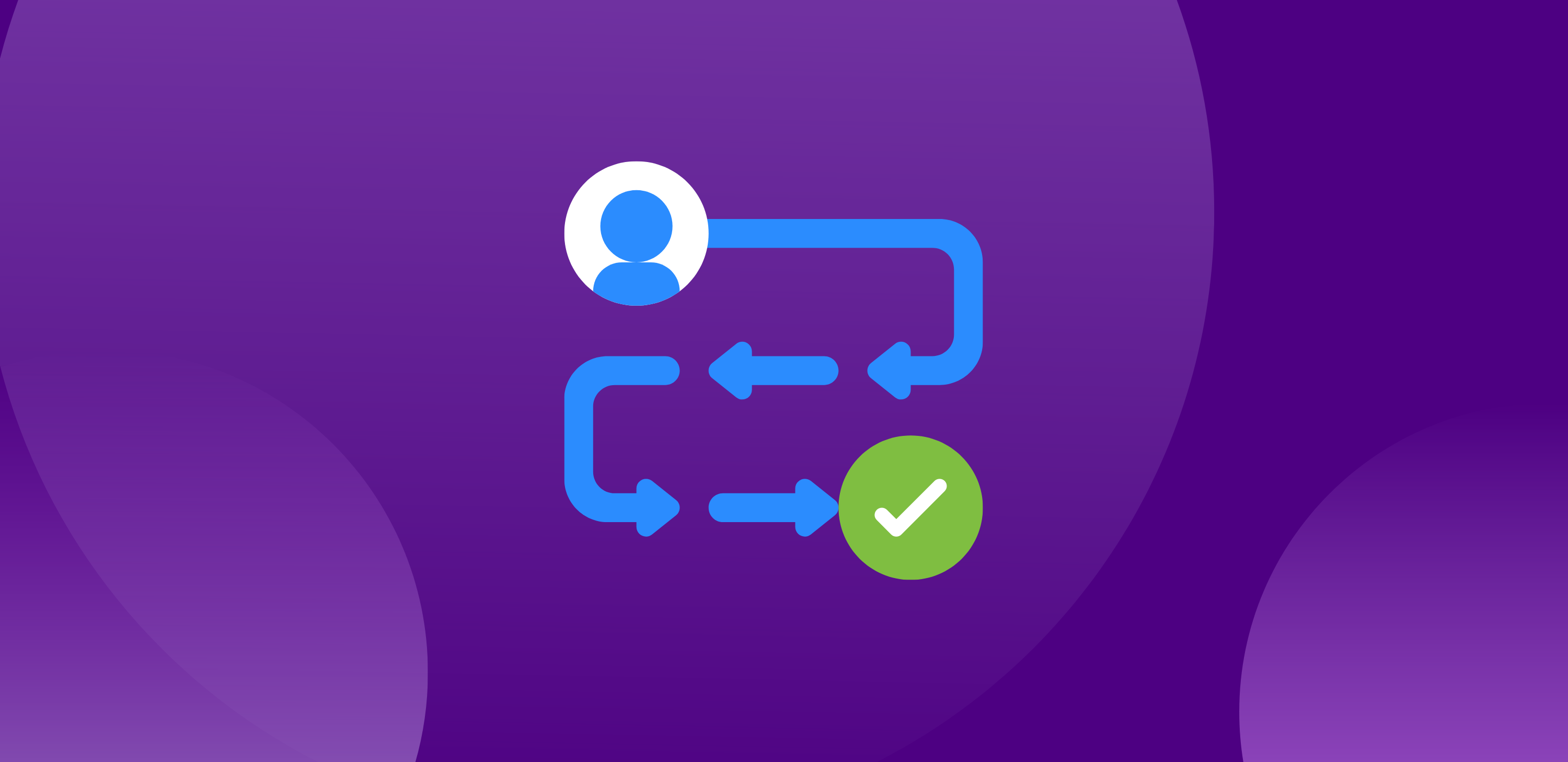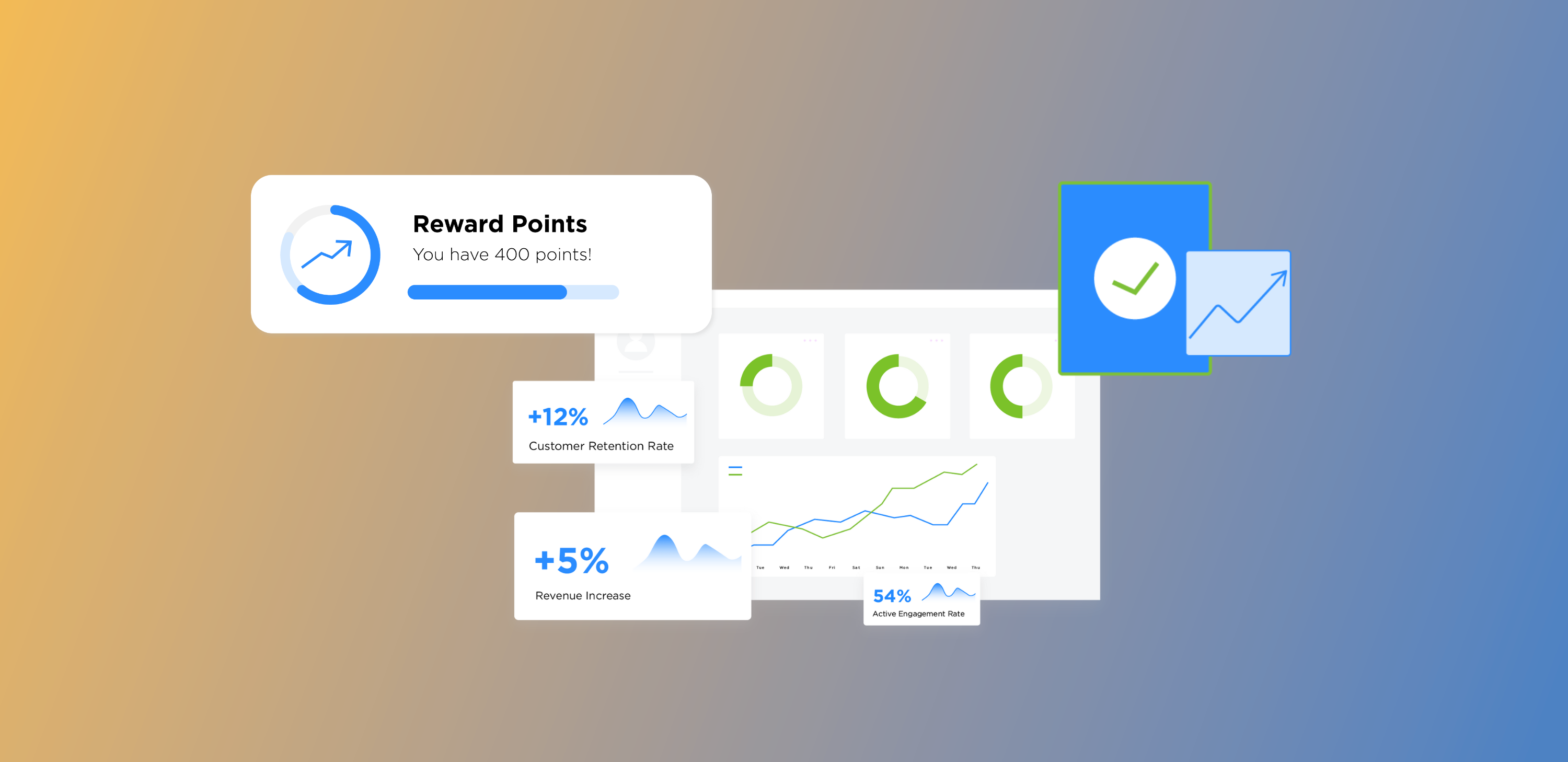How To Identify & Tighten The Gaps In Your Loyalty Marketing Strategy
What Is Loyalty Marketing And Why Do Brands Need It? By definition loyalty marketing is a marketing strategy in which a company focuses on growing...
Platforms
Services
Promotions
.
Featured Guide
Industries
Resources
Explore
13 min read
Barry Gallagher 07/03/25

Marketing alcoholic beverages and tobacco products has always been a high-stakes game. On the one hand, these industries have massive audiences and global brands to promote. On the other, they operate under some of the strictest advertising rules in the world. This blog dives into the promotional and incentive restrictions that marketers must navigate in regulated sectors, with a focus on the U.S. alcohol and tobacco markets. It is designed for marketing professionals who need a thorough understanding of what is (and isn’t) allowed — and creative ways to succeed within those bounds.
According to recent industry data, 78% of companies in regulated markets have compliance teams of five people or fewer. This lean staffing means that many marketing departments struggle to keep up with complex rules. In fact, PerformLine reports that over half of organizations spend six or more hours per week on manual compliance reviews. Such resource constraints underscore the urgent need for smarter strategies: if a promotion strays into illegal territory, a company risks fines, license suspensions, or severe reputational damage.
Meanwhile, consumer channels are rapidly evolving. Social media giants are tightening their policies (TikTok banned all alcohol advertising), and regulators are updating guidance on influencer marketing. For example, in late 2024 the Alcohol and Tobacco Tax and Trade Bureau (TTB) issued new rules allowing marketers to use “Linktree”-style profiles and page tags to satisfy mandatory labeling requirements in social posts. Navigating these shifts is daunting but critical: failing to adapt means losing share of voice to compliant competitors.
This blog will: (1) break down the key challenges posed by promotional restrictions (such as multi-jurisdiction compliance, coupon bans, age-gating rules, and digital ad prohibitions); (2) highlight current trends and innovations that give marketers an edge (from AI compliance tools to data-driven targeting); (3) offer a structured analysis of each challenge along with practical solutions; (4) present a case study of a successful compliant campaign; and (5) explore the future outlook of this space. By the end, marketing teams will have a clear roadmap of how to maximize brand impact without running afoul of regulations.
In short, readers will gain actionable insights to turn regulatory constraints into creative opportunities, ensuring growth in even the most regulated environments.
The Issue: Marketers in regulated industries contend with an intricate legal framework. In the U.S., alcohol is governed by the Federal Alcohol Administration Act plus 50 state-specific codes. Tobacco falls under federal FDA rules and varying state laws on advertising and promotion. This patchwork means the same promotional idea (say, a discounted bundle or a digital ad campaign) can be legal in one state and illegal in another. For instance, some states outright prohibit price discounts (“cents-off” coupons) for alcohol beverages. Others ban including sweepstakes game pieces on packaging. Even seemingly minor details like poster size or font can trigger state sanctions.
This complexity creates several headaches. First, marketers must constantly educate themselves: staying current on legislative changes in every market is daunting. For example, California’s unique sweepstakes law has dozens of provisions on things like eligibility and packaging us. Second, inconsistency leads to wasted effort: resources spent designing a promotion might be scrapped if any one jurisdiction’s law is violated. Finally, enforcement is severe. Alcohol licensees face hefty fines or even loss of license for violations. The regulatory bodies are unforgiving: “deviation from…requirements could result in major sanctions.
Solutions: The key is robust compliance management. Top marketing teams build collaborative processes with legal and regulatory experts. This often means creating checklists or rulebooks tailored to each product and market. For instance, a distilled spirits marketer may maintain a matrix of state-by-state rules on coupons, event sponsorships, and package promotions.
Another approach is to harness compliance technology. As regulations grow, many firms turn to RegTech solutions for oversight. Automated monitoring tools can flag content that risks violation (e.g., scanning ads for improper claims or underage imagery). The compliance software market is booming, projected to reach $200 billion by 2030, which shows how companies view these tools as mission-critical. By integrating AI-driven review into the creative workflow, marketers catch issues earlier and reduce the hours spent on manual legal reviews.
Finally, some brands strategically lobby or engage with regulators. Forming industry coalitions or working through associations (like the Beer Institute or DISCUS for alcohol) can help shape guidelines. In short, success requires a proactive compliance culture – training staff, updating guidelines, and using technology – so that meeting regulations becomes part of campaign planning rather than a last-minute hurdle.
The Issue: In regulated industries, everyday marketing tactics are often off-limits. Direct consumer incentives – coupons, discounts, free gifts, rebates – face strict limits. For example, the U.S. Code of Federal Regulations (CFR) allows alcohol coupons but caps reimbursements to the retailer at the coupon’s face value plus a handling fee. This effectively means marketers cannot subsidize discounts above cost. Many states double down: no cents-off coupons at all. Similarly, tobacco companies in the U.S. are flatly banned from distributing free samples of cigarettes or smokeless tobacco (outside very limited exceptions).
Even promotions that skirt direct discounts can be problematic. If a contest or sweepstakes is involved, alcohol laws may require that all forms and entry materials not be attached to or inside packaging in certain states (e.g., Texas). And crucially, trade-aid incentives to retailers are also tightly controlled: industry members cannot reward store employees or agents with any prize or free goods under the tied-house laws. What this means practically is that marketers cannot rely on freebies or heavy discounts to drive sales. Standard retail promotions like BOGO (buy one, get one) often fall outside compliance.
Impacts: These bans squeeze margins and complicate loyalty programs. For many consumer brands outside regulated sectors, coupon campaigns or sampling events are go-to strategies for trial and loyalty. In regulated spaces, those tools are severely blunted. Marketers lose two major advantages: price promotions to boost short-term sales, and gift-with-purchase to thank customers. Without these, returning customers must be enticed differently, through brand experience or product innovation.
Solutions: Creativity within compliance is essential. One approach is non-price incentives that remain legal. For instance, instead of a product coupon, a whiskey brand might offer a giveaway of branded barware (allowed for tobacco, gave away branded ashtrays, for alcohol, it’s often banned to use brand IDs on merch, but unbranded or cobranded items may be allowed). Some firms focus on experiential rewards: holding behind-the-scenes distillery tours or cocktail workshops exclusively for mailing-list members (ensuring all participants are vetted adults). Loyalty programs might give points redeemable for experiences or partner-brand goods (like music festival tickets) rather than discounts on the regulated product itself.
Another tactic is subtle bundling. For example, an alcohol marketer cannot offer a 10% off coupon, but could bundle a second product slightly cheaper, as long as each component’s price stands on its own. Or they might collaborate with non-regulated brands: e.g., co-promote a restaurant deal in exchange for product placement, since the deal is on food service rather than alcohol merchandise.
Meanwhile, at the retail level, many companies work through authorized trade promotions that comply with tied-house rules. For example, instead of rewarding a retailer’s bartender with a trip, a brewery might pay the bar an increased margin or additional marketing support (subject to state rules on retailer payments).
In all cases, it pays to lean on legal creativity: using promotions structured as loyalty points, experiential events, branded content, or partnerships. Each idea must be vetted, but history shows there are workarounds. (One tobacco case noted, for instance, a brand designed nicotine pouches to look like complimentary everyday items to avoid straightforward gift violations.) Ultimately, solutions hinge on understanding the fine print and brainstorming within that guardrail – a task legal and marketing teams should tackle together.
The Issue: Digital channels are a double-edged sword for regulated brands. On one hand, they offer precision targeting; on the other, they impose extra restrictions. U.S. alcohol marketers must follow a 70% over-21 audience rule even online, but social platforms add their own gates. TikTok, for example, bans all alcohol advertising outright. Facebook, Instagram, and others allow ads only if they are targeted such that under-21s are effectively excluded, and if the content does not glamorize drinking or imply it has social/health benefits. Google’s ad policies similarly forbid alcohol ads aimed at minors or linking alcohol to improved lifestyle.
These rules mean that a campaign that passes a legal-age audience check might still be rejected by a platform for subtle content cues. Further, influencer marketing must be navigated carefully: Instagram influencers cannot depict underage drinking, and branded posts often require additional disclaimers by regulation. (The TTB, for instance, requires any alcohol ad – even on social – to clearly identify the producer and importer by full name and address, though it recently allowed these details via hyperlinks in profile tags).
Impacts: Platforms are both audience-rich and scrutinized. A Facebook ad campaign that doesn’t properly age-gate can be taken down, wasting budget. Marketers cite social media compliance as one of their top headaches, next to email and calls. With so many moving parts (platform policies, self-regulatory codes, evolving FTC guidelines), maintaining a digital campaign’s compliance is ongoing work.
Solutions: Key strategies involve stringent targeting and creative safeguards. Marketers now use advanced audience filters – such as requiring profile age verification before opting into email lists, or geo- and demo-targeting so ad impressions are nearly guaranteed to be over the legal age. In some cases, brands turn to interactive content (quizzes, polls, games) on their own websites or apps with built-in age gates, thus shifting away from paid channels.
For influencer content, compliance checklists are becoming standard. Many alcohol firms now provide written briefs to influencers specifying required disclosures, permissible language (no “cocktail cures” or health claims), and mandatory hashtags (e.g. #drinkresponsibly). Thanks to the 2024 TTB circular, influencers can now meet labeling rules by tagging the brand’s Instagram page – a development marketers should leverage.
Technology also assists. Some companies use automated monitoring tools to scan social feeds for accidental policy violations. For example, solutions like GetGenAI can flag if a post might be deemed targeting minors or lacking required disclosure, before it goes live.
Finally, compliance teams maintain ongoing dialogues with platform representatives and industry groups to pre-clear campaigns. As platforms update rules (e.g., new age verification tools or ad formats for booze), savvy marketers adapt quickly. In short, digital channels demand tactical precision: age-verification tech, platform-specific creative, and proactive policy compliance must all be baked into social media plans.
The Issue: With so many rules to follow, marketers risk being overwhelmed by compliance tasks. PerformLine’s 2025 Benchmark Report finds that many companies rely on tedious manual workflows for marketing compliance. Over a quarter of respondents spend more than 20 hours per week on manual monitoring alone. These strains delay campaigns (56% call reviews are time-consuming) and strain small teams.
The cost is twofold: wasted marketer time and increased error risk. Humans simply can’t keep up with every new regulation, especially when each piece of content (an email, ad creative, blog post) must be checked for dozens of possible infractions. In regulated marketing, a single mistake can erase campaign gains with legal consequences.
Trends & Solutions: The clear shift is toward automation and integration. Companies are investing heavily in RegTech that embeds compliance into the marketing process. According to industry analysis, compliance technology budgets now outpace legal spend. Tools are emerging for every channel: automated content scanners flag problematic wording (e.g., health claims, underage imagery), AI engines review ad text against complex rule-sets, and workflow platforms route campaigns through automated approval queues.
For example, marketing compliance platforms can pull recent regulations into custom “rulebooks” that marketing staff use in real time. A marketer drafting a tweet or Facebook ad could see instant alerts if the draft violates any rule (say, lacking a required warning or targeting minors). Some platforms even check images (flagging cigarette packs or other banned visuals). This reduces reliance on human review.
Beyond software, best practices include forming a central compliance committee that meets regularly. In many firms, this includes legal counsel, experienced marketers, and external experts. They update a living document or intranet portal summarizing must-follow guidelines (e.g., a “compliance playbook” on alcohol labeling and promotions).
Training is also key: companies conduct frequent workshops or e-learning for marketing teams, highlighting new rules (such as the latest state-sponsored barcode regulations or age-gate tech). This human element, combined with tech tools, creates a compliance “shield.” The goal is to catch and correct any issue before it leaves the drafting table.
Leveraging specialized agencies and services is another solution. Some marketers outsource parts of their process to firms like Statara, which specializes in age-gated marketing analytics. These vendors bring both data (verified age lists, audience insights) and regulatory know-how, reducing in-house burden.
In sum, the rise of compliance tech is perhaps the most significant innovation in this space. Marketers embracing it find they can allocate more time to strategy and creativity while minimizing legal risks. As the RF Partners report notes, companies are shifting from “check-the-box” compliance to a strategic, tech-powered approach – a trend that will only accelerate in the coming years.
Context: Crafted Spirits Co. (a fictional U.S. distillery) wanted to launch its new rye whiskey to millennials, but faced tight promotional rules. Free tastings were banned in their state, coupons were forbidden, and social media ads had to avoid youth audiences.
Strategy: The team devised a multi-pronged campaign with compliance built in:
Digital Content & Events: They created an “Urban Mixologist” online series, featuring popular adult bartenders demonstrating whiskey cocktails. Access required email sign-up with an age-verification checkbox (using an external ID service). These videos ran on YouTube (non-paid) and the brand’s site, effectively sidestepping ad regulations while engaging drinkers with cocktail recipes.
Loyalty Program: Instead of discounts, Crafted Spirits launched a point-based loyalty club. Customers earned points by buying whiskey and attending virtual events, redeemable only for non-monetary rewards (brand merchandise like glasses or T-shirts, shipping free of brand logos to comply with merchandising rules).
Influencer Partnerships: The brand collaborated with two social-media mixologists. Under the new TTB circular, each influencer’s posts tagged Crafted Spirits’ verified page to cover labeling requirements. The marketing team provided strict content guidelines: no under-21 models, mandatory #21Plus and #drinkresponsibly tags, and a concise written disclosure at the end of captions.
Media Buys: They ran Facebook ads targeted narrowly to ages 25-40 within major metro areas. The ad creative focused on lifestyle (urban nights) with no visible whiskey bottles in images (avoiding trivial promotion claims). Mandatory disclaimers were included in small but legible font.
Outcomes: Within the first quarter:
Online engagement soared, with 20,000 views of the mixology series. Email opt-ins (all age-verified) rose by 30%.
Loyalty program membership hit 5,000, with 70% of members attending at least one virtual event, boosting customer lifetime value.
Alcohol sales grew by 15% year-over-year despite no price promotions (v. an industry average of ~5%). Notably, the gross margin improved because the campaign avoided heavy discounting.
Crucially, no compliance issues arose. All Facebook ad variants were approved on the first submission; regulators had no infractions to cite in this period.
Lessons Learned: This example shows how integrating compliance early enables marketing success:
Innovative Content: By using age-gated, value-added content (cocktail tutorials), the brand educated and engaged legal-age consumers without running afoul of rules against appealing to youth.
Leveraging New Guidelines: Embracing the TTB’s updated social media guidance allowed influencer marketing that satisfied legal disclosure requirements in a user-friendly way.
Focusing on Experiences: With standard incentives off the table, Crafted Spirits offered unique non-cash rewards and exclusive events, which built loyalty and word-of-mouth.
Rigorous Review Process: Every ad and post was vetted by a compliance checklist (informed by sources like the CFR and TTB guidelines) – a step that prevented any violations.
This case underscores that creativity and compliance can go hand-in-hand. Marketers who anticipate restrictions and plan within those limits can deliver engaging campaigns and measurable business results. The success hinged on a strategic mix of digital content, careful targeting, and novel incentives – all compliant by design.
Looking ahead, marketers in regulated industries should prepare for both tightening restrictions and new opportunities. Public health advocates and regulators continue to pressure for more oversight. For example, the WHO’s SAFER initiative explicitly promotes “comprehensive restrictions” on alcohol advertising and promotion. In practice, this may mean more countries imposing ad limits (especially online) and stricter enforcement of existing rules. Brands should expect ongoing scrutiny of youth-targeting and misleading content.
Simultaneously, technology will offer solutions. AI and automation will become mainstream in compliance workflows. As RF Partners notes, companies are shifting to strategic risk management with tech tools. We can expect next-gen platforms that not only check text and images against rules, but also learn from past decisions to better identify subtle issues (like influencer language or mixed-content ads). Integration of blockchain or digital watermarking might even allow ads and retail materials to self-report compliance status. These innovations could significantly reduce time to market for campaigns.
Consumer behavior trends will also shape the space. The surge in wellness and moderation has led to exploding sales of non-alcoholic beverages (35% growth in 2023). Brands may increasingly diversify into “low and no” lines, which often face a different (sometimes lighter) promotional regime, opening new marketing playbooks. Meanwhile, as Gen Z becomes a larger drinking-age cohort, marketers will need to balance “social responsibility” messaging with authentic brand voice. Expect more campaigns that highlight responsible enjoyment and cultural relevance, rather than heavy drinking.
Another trend is personalization under regulation. Marketers are using data analytics (within privacy laws) to micro-target adult segments. For instance, collaborations between loyalty programs and digital platforms could yield hyper-targeted offers (e.g., discounts on alcohol-adjacent products) while still respecting age gates. Identity verification tech (even novel approaches like AI age-estimation in video) might mature, allowing richer online engagement without violating laws.
Finally, as cannabis legalization spreads, we may see cross-industry learning. The cannabis sector’s promotional restrictions echo those of tobacco/alcohol, and tech solutions developed there (like advanced geofencing and ID checks) will transfer. Alcohol brands in some markets are already experimenting with CBD-infused drinks or cannabis-inspired marketing tactics. This convergence suggests that the rulebook will broaden – marketers should monitor parallel regulatory developments in emerging “regulated” markets (cannabis, psychedelics, gambling).
In summary, the next five years will likely bring stricter enforcement but also richer compliance tools. Marketers who stay agile and technology-savvy can transform these challenges into strategic assets. By investing in compliance infrastructure now, companies will be well-positioned to capture market share when opportunity windows open under new norms (e.g., entering non-alc segments, leveraging virtual experience marketing).
Promotional and incentive restrictions in regulated industries present formidable challenges, but they are far from insurmountable. Throughout this paper, we have seen that the core issues for marketers revolve around navigating complex laws, finding permissible ways to engage consumers, and managing compliance efficiently. Key takeaways include:
Regulatory diligence is non-negotiable. The variability and strictness of federal/state rules mean that marketers must build robust compliance checks into every campaign. Small missteps (like an unsanctioned discount or an ill-targeted ad) can undo months of work.
Technology is a powerful enabler. Automation and data tools are now integral. Investments in AI-driven compliance software, age-verification services, and data analytics pay off in faster approvals and safer marketing tactics. As platforms update policies, having tools that quickly adapt is crucial.
Creativity can thrive under constraints. Limitations on coupons or samples force marketers to innovate. We discussed how content marketing (e.g., instructional mixology videos), loyalty experiences, and influencer collaborations (using new tagging rules) can deliver impact without violating laws. The case study demonstrated that compliant campaigns can still boost engagement and sales significantly.
Collaboration beats siloed efforts. Effective campaigns in regulated markets hinge on tight cooperation between marketing, legal, compliance, and external partners. Regular training and updated guidelines keep teams aligned. The PerformLine research reminds us that many organizations struggle with slow approval processes – solving this requires clear roles and communication, not just tools.
Actionable Recommendations: For marketers in alcohol, tobacco, or similar regulated industries, we offer the following steps:
Audit your current processes. Map out where compliance fits into campaign planning. Identify bottlenecks (e.g., who reviews ads, how long it takes) and gaps in knowledge. Make sure someone tracks regulatory updates (federal and state) daily.
Invest in compliance technology. Even small teams can benefit from software that automates rule checks. For example, use a platform that monitors social posts in real-time for required warnings or age targeting issues. Aim to reduce manual review hours substantially.
Develop an in-house compliance guide. Create a living “playbook” that summarizes what marketing tactics are allowed or forbidden in each key market. Include quick-reference tables on coupons, events, influencer rules, etc. Update it annually or whenever laws change.
Train and empower your marketing team. Hold workshops on best practices. Encourage marketers to incorporate compliance considerations early—designing campaigns with input from legal can save re-work later. Use checklists before any launch.
Leverage data and partnerships. Use verified audience data (age, location) to target legally. Partner with third-party experts (like Statara or specialized agencies) who can provide compliance-safe marketing channels or audit services. Sharing the load frees your team to focus on strategy.
Be ready to pivot. Keep a pulse on consumer trends (like non-alcoholic beverages or new digital channels) to find growth areas within compliance constraints. For instance, if regulations tighten on one channel, shift to another compliant venue (as many brands did with virtual events during the pandemic).
In conclusion, while promotional restrictions in regulated industries are strict and evolving, marketers who approach them strategically can still achieve growth. The path forward is clear: embrace compliance as part of your marketing strategy rather than an afterthought. By combining creativity with thorough legal safeguards and cutting-edge tools, marketing teams can protect their brands and seize opportunities, even in the most heavily regulated landscapes.

What Is Loyalty Marketing And Why Do Brands Need It? By definition loyalty marketing is a marketing strategy in which a company focuses on growing...

Loyalty programs have come a long way since their inception. Once considered a simple tool to encourage repeat purchases, these programs have evolved...

In the busy and ever-changing climate of marketing, it takes more than just creativity to stand out among your competitors. It takes strategic...